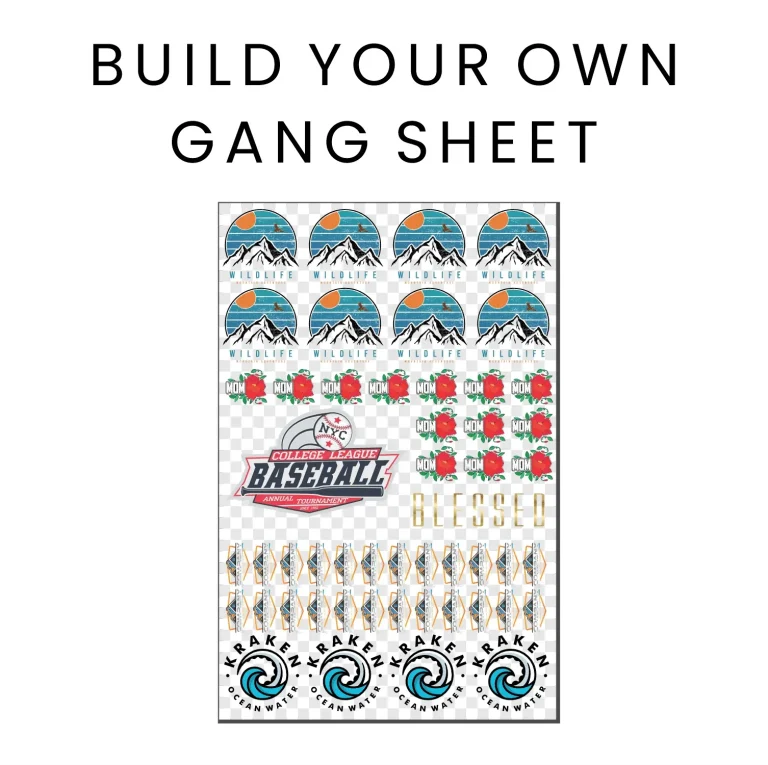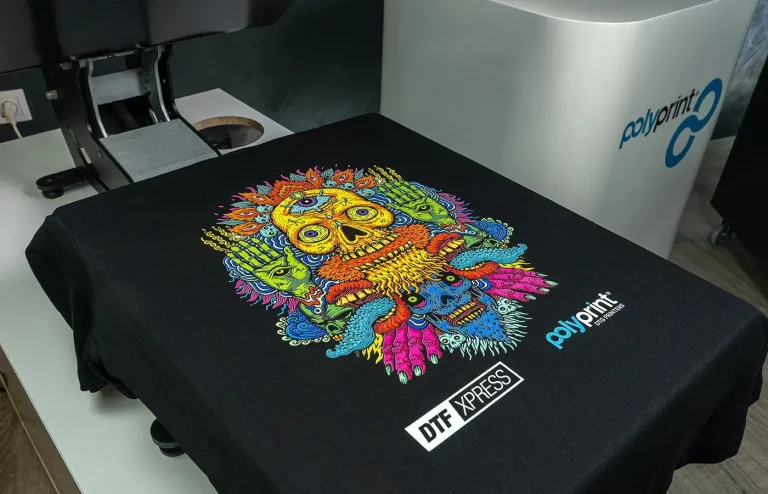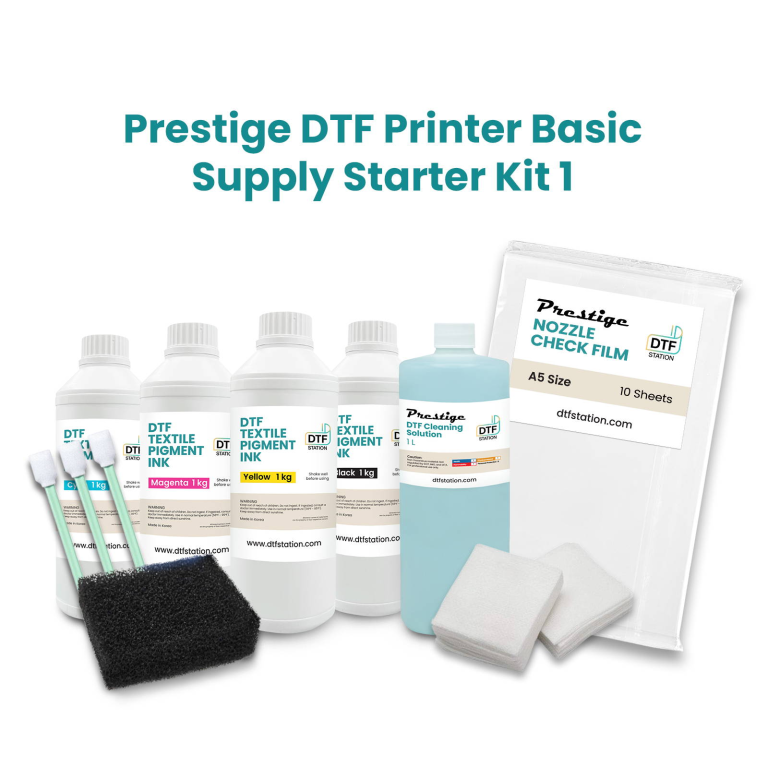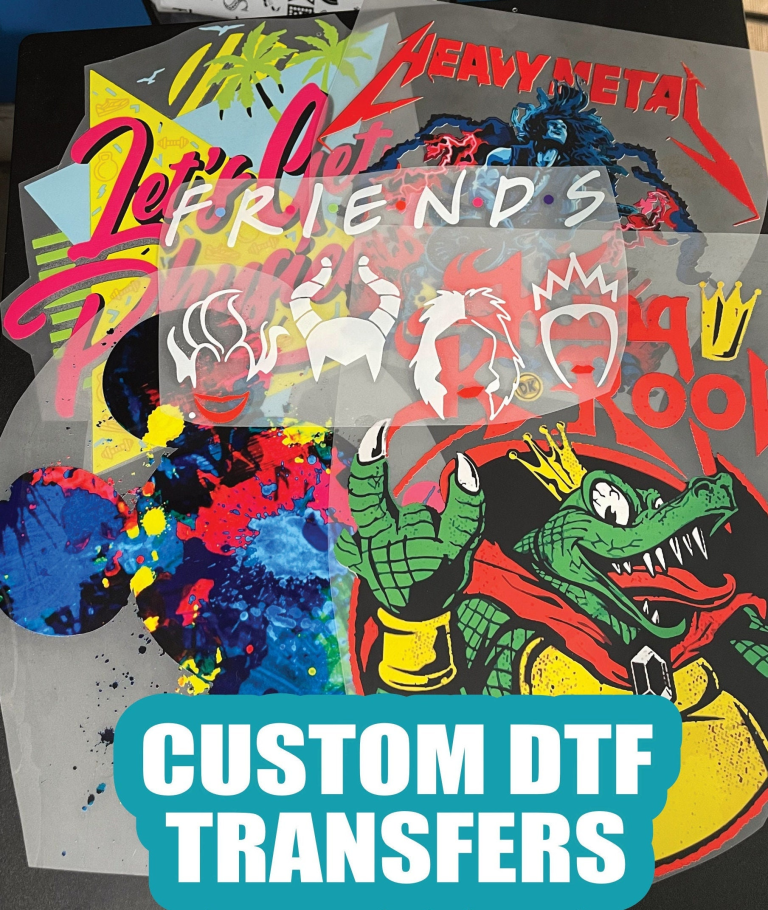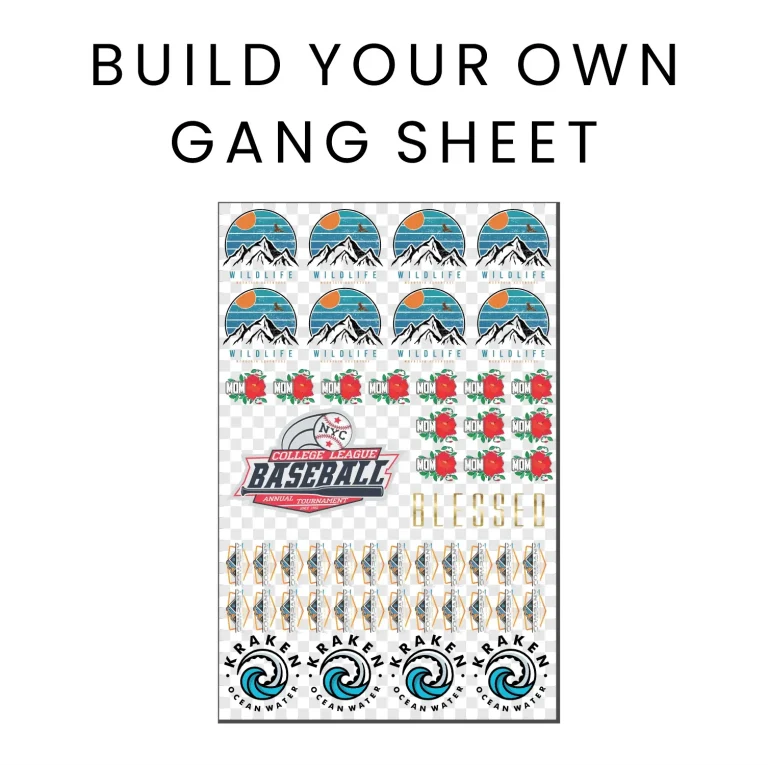DTF Supplies: The Ultimate List for Beginners
DTF supplies are essential components of the exciting world of Direct to Film (DTF) printing, a revolutionary technology that’s transforming custom apparel creation. This method allows you to print stunning designs onto specialized films that transfer effortlessly onto various fabrics, making it a favorite among both hobbyists and small business owners. As you dive into the realm of DTF printing, having the right supplies not only enhances your efficiency but also plays a crucial role in the quality of your final products. In this comprehensive guide, we will navigate through all the necessary DTF supplies, ensuring that beginners have the tools needed to succeed. Alongside expert DTF printing tips, we will equip you with valuable insights to help you start your DTF journey on a solid foundation.
Entering the vibrant sphere of custom garment decoration, one encounters a game-changing technique known as Direct to Film printing, commonly abbreviated as DTF. This innovative approach facilitates the application of vivid artworks onto layers of film that are then seamlessly transferred onto textiles of varying types. With a focus on beginner-friendly tools and equipment, this guide is tailored to help newcomers familiar with direct-to-film supplies thrive in their creative endeavors. From choosing the right DTF printer to understanding how to work with film and adhesive powders, there’s a wealth of knowledge to explore. By embracing practical tips and industry insights, you will unlock the full potential of this compelling printing method.
Understanding DTF Printing Basics
Direct to Film (DTF) printing is quickly becoming a preferred method among creators and small business owners who aim to produce high-quality custom garments. Unlike its predecessors, DTF printing features a unique process where vibrant inks are printed directly onto a transfer film. This film is then heat-pressed onto textiles, making it versatile for various fabric types. As a beginner, grasping the fundamentals of DTF printing is essential, as it allows for greater creative freedom and results that can be tailored to individual preferences.
The appeal of DTF printing lies in its ability to produce detailed designs quickly and efficiently. This technology minimizes the limitations that come with traditional printing methods, allowing prints that are compatible with both light and dark fabrics. By understanding the basics of how DTF printing works, beginners can embark on their creative journey with a clearer vision of the process, the equipment needed, and the various potential applications.
DTF printing not only facilitates stunning results, but it also allows for easier setup compared to other methods such as Direct to Garment (DTG) printing. With the right printer and supplies, it’s possible to achieve impressive outcomes without extensive technical knowledge. This makes DTF printing an ideal choice for those just starting out in the custom apparel industry, as the learning curve is less steep while still achieving professional results.
Additionally, the printing process for DTF is relatively straightforward. Users take advantage of design software to create their graphics, then print them onto the special transfer film. Following that, a hot-melt adhesive is applied before heat pressing the design onto the fabric, allowing for a smooth and consistent transfer. For beginners, mastering these steps equips them with essential skills to expand their capabilities in the world of DTF printing.
Essential Supplies for DTF Printing
To successfully dive into DTF printing, having a well-rounded arsenal of supplies is critical. At the heart of this setup is a quality DTF printer, which is designed specifically to handle special inks and produce high-resolution prints onto transfer films. It’s worth noting that converting existing inkjet printers can be an option, particularly if you own brands like Epson that are known for their compatibility. However, dedicated DTF printers often yield superior results and greater reliability.
In addition to the printer, selecting the right DTF inks is equally important. These unique inks are formulated to bond effectively with various fabrics during the heat transfer process, ensuring that your designs remain vibrant and intact, even after repeated washings. Beginners should prioritize sourcing high-quality inks that align with their printer model. The transfer film itself also requires careful selection; films vary by coating and specifications, impacting the final quality of the apparel design.
A reliable heat press is another crucial component of the DTF printing setup. It should offer adjustable temperature and pressure settings to accommodate different fabric types and ensure consistent results. Without appropriate heat application, your ink designs may not adhere properly, leading to lackluster outcomes. Thus, investing in a quality heat press machine tailored for DTF printing will set the foundation for success.
Finally, don’t overlook the significance of adhesive powder, which is applied to the printed transfer film. This hot-melt powder ensures that your design adheres well to the fabric. Choosing the right type of adhesive can make all the difference in the durability and appearance of the final product. As you gather your essential DTF supplies, remember that attention to detail in each component will greatly influence your printing results.
Best Practices for DTF Printing
As you embark on your DTF printing journey, adhering to best practices can significantly enhance your results. One of the most critical factors is understanding and managing the heat press settings. Different fabrics and films require unique temperature and timing adjustments to achieve optimal transfers. Beginners should invest time into researching and experimenting with these variables to see what works best for their specific projects.
It’s also essential to maintain your DTF printer properly. Neglecting routine maintenance can lead to clogged ink channels and reduced print quality. Developing a habit of regularly cleaning the print heads and ensuring your inks are flowing smoothly will contribute to consistently high-quality outputs. Keeping a maintenance schedule will help prevent issues that could hinder your creative process.
Another key practice is to embrace experimentation. The beauty of DTF printing lies in its versatility, so don’t hesitate to try out various fabric types, heat settings, and design elements. Recording the outcomes of these trials can provide valuable insights into which combinations yield the best results, ultimately refining your process over time. Cultivating a spirit of experimentation will help you develop as a DTF artist.
Lastly, connecting with online communities and forums can provide insights into best practices and troubleshooting tips. Engaging with fellow enthusiasts can lead to new ideas and techniques, fostering a supportive network in the DTF printing community. This collaborative approach not only enhances your knowledge but also motivates you to explore more advanced techniques and applications.
Exploring Recent Trends in DTF Printing
As technology advances, so do the trends in DTF printing. Recently, there has been a surge in innovations that shorten printing times and enhance adhesive performance. These improvements allow for quicker turnarounds on projects without sacrificing quality, a significant advantage for small business owners looking to optimize their workflows. Keeping abreast of these trends is crucial for anyone looking to excel in the DTF printing arena.
Additionally, there is an increasing focus on environmentally friendly materials in the DTF printing landscape. Many manufacturers are now producing inks and films that are more sustainable and less harmful to the environment. For aspiring DTF printers, incorporating eco-friendly supplies not only reflects a responsible approach to production but can also appeal to a broader audience concerned with sustainability.
Moreover, DTF advancements have given rise to a plethora of design options. Creators can now delve into complex designs with intricate color palettes and details that were challenging to achieve in the past. Staying informed about the latest software and design tools can enhance your creative capabilities and empower you to bring your unique visions to life.
Finally, exploring these trends can help beginners discern which supplies and equipment will best serve their emerging projects. By being aware of recent developments and consumer demands, DTF printers can better align their offerings to meet market needs, positioning themselves strategically within this competitive field.
Tips for Selecting Quality DTF Supplies
Choosing the right DTF supplies is paramount for achieving excellent printing results, especially for beginners. Start with your DTF printer—do thorough research to find a model that fits your needs and budget. Look for reviews detailing user experiences, print quality, and maintenance ease. Brands known for their efficiency and reliability, such as Epson, may be particularly appealing, especially when converting inkjet models.
When it comes to DTF inks, prioritize high-quality options that are compatible with your selected printer. Research suppliers that offer reliable inks and read testimonials from other users to gauge their experiences. Quality inks not only yield better color vibrancy but also enhance the durability of your designs when heat-pressed onto your fabrics.
For transfer films, make sure to choose the type suited to your printer’s specifications. Check whether the film has a coating that promotes good adhesion of the ink, which will lead to better transfer performance. Many suppliers provide guidance on film selection, making it easier for beginners to find what they need.
Lastly, don’t overlook the importance of customer service from the vendors you select. Reliable suppliers will offer support and guidance on their products, which is invaluable for newcomers navigating the world of DTF printing. Prioritizing quality and support will set you on the right course to enjoy a successful DTF printing journey.
Engaging with the DTF Community
Building connections within the DTF printing community can be immensely beneficial for beginners. Engaging with experienced printers and fellow enthusiasts through online forums and social media platforms allows for a sharing of tips, tricks, and expertise. These interactions can open doors to learning opportunities, helping you refine your skills and stay updated on the latest trends in DTF supplies and techniques.
Additionally, participating in community discussions can spark creative collaborations and inspire new project ideas. Many enthusiasts share their successes and failures openly, providing valuable insights that can save time and resources on your DTF printing journey. Consider joining groups dedicated to DTF printing, where you can ask questions, share your work, and gain feedback to help you grow.
Moreover, following industry leaders, brands, and influencers in the DTF printing space can also provide a wealth of knowledge. Many professionals share tutorials, advice on supplies, and updates on technological advancements, making it easier to keep your skills sharp. This engagement cultivates a sense of belonging in the DTF community, motivating you to explore and be more adventurous with your printing projects.
Ultimately, the DTF printing community is a vibrant space filled with passionate individuals eager to share their journeys. Being an active participant will not only boost your learning curve but also foster lasting relationships within the community. By leveraging the collective knowledge of others, you’ll be well-equipped to make the most of your DTF printing endeavors.
Frequently Asked Questions
What are the essential DTF supplies needed for beginners?
To start with DTF printing, beginners need a DTF printer, special DTF inks, transfer film, hot-melt adhesive powder, a heat press machine, design software like Adobe Illustrator, and protective sheets for heat pressing.
How does a DTF printer differ from a standard inkjet printer?
A DTF printer is specifically designed to handle special DTF inks and create transfer films that bond effectively to fabrics. Unlike standard inkjet printers, a DTF printer ensures better quality and longevity for custom designs.
What is the role of adhesive powder in DTF printing?
Adhesive powder is applied to the printed transfer film and is crucial for ensuring that the design adheres well to the fabric during the heat press process, enhancing the durability and appearance of the final output.
What are some important DTF printing tips for beginners?
Beginners should familiarize themselves with the correct temperature and timing settings on their heat press, maintain their printer regularly, and experiment with various fabrics and designs to improve their DTF printing skills.
Can I use any ink for DTF printing?
No, only specialized DTF inks are formulated to bond with fabrics during the transfer process. Using the correct DTF ink ensures vibrant colors and durability in the final product.
Why is a heat press machine important for DTF printing?
A heat press machine ensures consistent temperature and pressure, which are critical for achieving high-quality transfers in DTF printing. The right machine will significantly impact your design’s appearance and longevity.
| Item | Description | Importance |
|---|---|---|
| DTF Printer | A printer specifically designed for DTF or modified inkjet models. | Essential for producing quality transfer films. |
| Special DTF Ink | Inks formulated for adherence to various fabrics. | Crucial for vibrant and durable designs. |
| Transfer Film | Film with a specific coating needed for DTF printing. | Foundation for any DTF print job. |
| Adhesive Powder | Hot-melt powder to bond designs during transfer. | Critical for longevity of transfers. |
| Heat Press Machine | Machine to apply heat and pressure for transfers. | Ensures quality transfer process. |
| Design Software | Programs for creating designs for DTF printing. | Needed for preparing artwork for printing. |
| Protective Sheets | Sheets that protect during heat press application. | Prevents sticking and ensures correct transfer. |
Summary
DTF supplies are critical for anyone looking to start their journey into the world of Direct to Film printing. This innovative process allows for vibrant designs to be transferred onto fabrics, and having the right supplies is essential for achieving professional-quality results. From a specialized DTF printer and high-quality inks to the correct transfer films and heat press machines, each element plays a vital role in the success of your projects. Joining a community of DTF printing enthusiasts can help you navigate the nuances of this craft, making it easier to troubleshoot challenges and share tips. With dedication and the proper supplies, you can unlock the creative potential of DTF printing.


